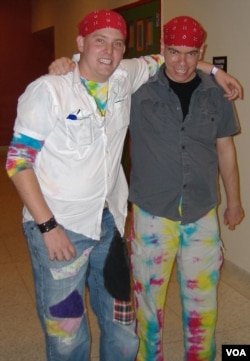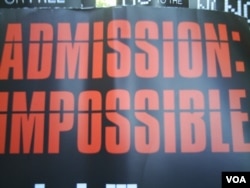Student Union
I Am On My Way....To Graduate School!
What then?
Well, in truth, I have known for a while now which path I wanted to pursue. I have been interested in politics and international affairs for a long time and would like to be a part of that world, whether in terms of policy and decision-making or analysis and commentary. So it wasn’t too hard for me to decide to look for master’s programs in that field. I know politics can be a real pain – both for the politician as well as the citizen – but it’s the one sphere, I feel, where I can achieve a meaningful impact.
As far as research into institutions went, the APSIA website (Association of Professional Schools of International Affairs) was a good place to start. I can’t say I did much beyond that, as that website listed many top institutions. I did also have a look at Ivy League colleges, and – I must confess, even though this is a blog of international students in America – that I looked at options in other countries as well.
GRE and TOEFL
One of the earliest steps in the process involved that peculiar practice in the U.S. of taking standardized tests and exams. I don’t want to be one to complain, but the truth is that the purpose (and definitely the price) of the GRE did not make much sense to me. I managed to take it over the summer in Armenia, though, before senior year, so at least I did not have to spend any time on it during the school year.
Proving English-language capability was fortunately not an issue for me, as my undergraduate studies are in English.
Application Process
Most of the universities where I applied had an almost-exclusively online admissions process. In fact, most of them had outsourced to the same company or software, so the way their websites were setup was similar. But I learned a great deal about the universities just by the admissions process itself, especially looking at what kind of questions those various places asked, what kind of demands they put on their applicants.
It seemed to me that some universities wanted extra reassurances from their applicants that they would be able to pay for their studies. Not that any university did not want such guarantees, but pushing that question was a bit of a turnoff for me.
Contrary to that, only one out of the six places where I applied asked for writing samples. That was really cool. They were also the ones who had real, live human beings respond to my e-mail inquiries within a matter of days. It’s little things like that which leave a lasting, positive impact.
Letters of Recommendation
The letters of recommendation are also a very important aspect of applications. People tend to be busy, so it is useful to remind your recommenders every once in a while to go on to that website and to submit that letter. I found a gentle reminder e-mail once every couple of weeks or so was enough. It is also a good idea to get an early start on your recommenders, so that they have the time to craft a meaningful letter.
I was fortunate in picking a couple of people at my college who I knew shared my interests and also with whom I had had helpful interactions over the past few years, including discussions on politics and international affairs. My third recommender was a mentor and internship boss of mine back in Armenia, so she had seen my “real life” work (as opposed to my academic work) and could speak to that.
If you are graduating soon, but if you won’t be applying for further study this coming year, I’d recommend asking a favorite professor to have a letter of recommendation on file, just as a reference in case of future need, because your professor may not remember as many details about your conduct in class or your character after a year or two.
Financial Aid
Even though the online applications were really similar, many of the universities to which I applied had entirely separate processes for financial aid, which required almost just as much work as the application itself.
I was told that it is difficult to get funding at the graduate level in humanities or social sciences, and, yes, as it turns out, the financial aid has not come to much, at least not as much as the support I'm receiving now for college. Still, every little bit helps, and I am grateful for the assistance.
Personal Statement
I like to think that the personal statement is the most important part of the admissions packet, so I worked really hard to highlight my strong points and to elaborate on why the place where I was applying was suitable for my choice of career and academic interest.
But I tried to be concise as well, as I imagine those universities get thousands and thousands of applicants with only a handful of staff to sort through them. They all put word limits, as a matter of fact, so the choice of words had to be careful too.
Different Paths
I have noticed that many of my fellow-seniors are not sure what path they wish to pursue. A lot will not be going on to graduate school. This seems to be a pretty normal thing around here. Work experience, internships, volunteer work or international experiences are a big plus, in fact, when applying to master’s programs. But I’d had all that before I came to the States, “in-between-schools,” as the saying would go. Since I already had a good idea of my choice of career, taking on this next challenge seemed like the right thing to do.
And that is very significant: to be aware of what it is exactly you want to do with your life. Finding the exact place or program that fits those aspirations comes second. There is an immense diversity of colleges and universities in this country, which is a great luxury. So, I’d say take your time, look into various possibilities, and apply to as many as you can. It will take effort and patience (and, with application fees, a bit of money just to try), but I like to think that it will be a worthwhile investment.
But I won't be able to tell you for sure until a couple of years or more down the road.
See all News Updates of the Day
With federal student aid delays, students aren’t sure what college will cost
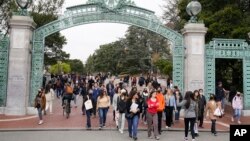
The U.S. Department of Education’s federal student aid form (FAFSA) experienced serious glitches and delays this year.
Now, many students have been admitted to college, but don’t know how much money they’ll need to attend.
Read the story from Susan Svrluga and Danielle Douglas-Gabriel for The Washington Post. (March 2024)
Senator draws attention to universities that haven’t returned remains
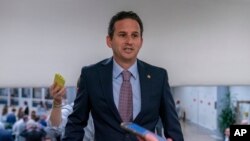
More than 70 U.S. universities continue to hold human remains taken from Native American burial sites, although those remains were supposed to be returned 30 years ago.
Jennifer Bendery writes in Huffington Post that one senator has been using his position in an attempt to shame universities into returning remains and artifacts. (April 2024)
COVID forced one international student to go hungry
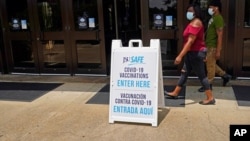
When Samantha (not her real name) enrolled in community college in the U.S., her family at home in South Africa scrimped and saved to support her.
But the COVID-19 pandemic hurt the family’s finances, and at one point Samantha had four on-campus jobs just to make ends meet. Many in the U.S. believe international students are wealthy sources of funding for universities, but stories like Samantha’s suggest otherwise.
Andrea Gutierrez reports for The World. (March 2024)
Tips for paying for a STEM degree as an international student
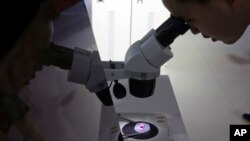
For US News & World Report, Melanie Lockert describes how to calculate the cost of a STEM degree, and where to find funding. (March 2024)
NAIA all but bans its transgender college athletes from women's sports
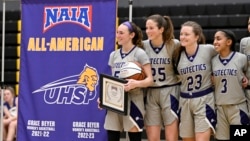
The National Association of Intercollegiate Athletics, the governing body for mostly small colleges, announced a policy Monday that all but bans transgender athletes from competing in women's sports.
The NAIA's Council of Presidents approved the policy in a 20-0 vote. The NAIA, which oversees some 83,000 athletes at schools across the country, is believed to be the first college sports organization to take such a step.
According to the transgender participation policy, all athletes may participate in NAIA-sponsored male sports but only athletes whose biological sex assigned at birth is female and have not begun hormone therapy will be allowed to participate in women's sports.
A student who has begun hormone therapy may participate in activities such as workouts, practices and team activities, but not in interscholastic competition.
"With the exception of competitive cheer and competitive dance, the NAIA created separate categories for male and female participants," the NAIA said. "Each NAIA sport includes some combination of strength, speed and stamina, providing competitive advantages for male student-athletes. As a result, the NAIA policy for transgender student-athletes applies to all sports except for competitive cheer and competitive dance, which are open to all students."
There is no known number of transgender athletes at the high school and college levels, though it is believed to be small. The topic has become a hot-button issue for those for and against transgender athletes competing on girls' and women's sports teams.
At least 24 states have laws barring transgender women and girls from competing in certain women's or girls sports competitions. Last month, more than a dozen current and former college athletes filed a federal lawsuit against the NCAA, accusing the sports governing body for more than 500,000 athletes of violating their rights by allowing transgender women to compete in women's sports.
The Biden administration originally planned to release a new federal Title IX rule — the law forbids discrimination based on sex in education — addressing both campus sexual assault and transgender athletes. But earlier this year, the department decided to split them into separate rules, and the athletics rule now remains in limbo even as the sexual assault policy moves forward.
Hours after the NAIA announcement, the NCAA released a statement: "College sports are the premier stage for women's sports in America and the NCAA will continue to promote Title IX, make unprecedented investments in women's sports and ensure fair competition for all student-athletes in all NCAA championships."
The NCAA has had a policy for transgender athlete participation in place since 2010, which called for one year of testosterone suppression treatment and documented testosterone levels submitted before championship competitions. In 2022, the NCAA revised its policies on transgender athlete participation in an attempt to align with national sport governing bodies, following the lead of the U.S. Olympic and Paralympic Committee.
The three-phase implementation of the policy included a continuation of the 2010 policy, requiring transgender women to be on hormone replacement therapy for at least one year, plus the submission of a hormone-level test before the start of both the regular season and championship events.
The third phase adds national and international sport governing body standards to the NCAA's policy and is scheduled to be implemented for the 2024-25 school year on August 1.
There are some 15.3 million public high school students in the United States and a 2019 study by the CDC estimated 1.8% of them — about 275,000 — are transgender. The number of athletes within that group is much smaller; a 2017 survey by Human Rights Campaign suggested fewer than 15% of all transgender boys and transgender girls play sports.
The number of NAIA transgender athletes would be far smaller.




